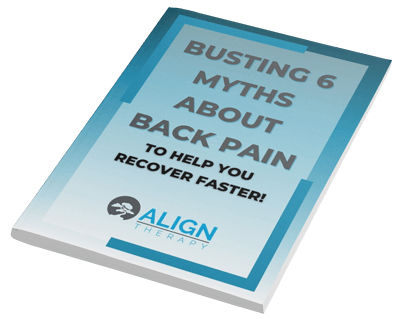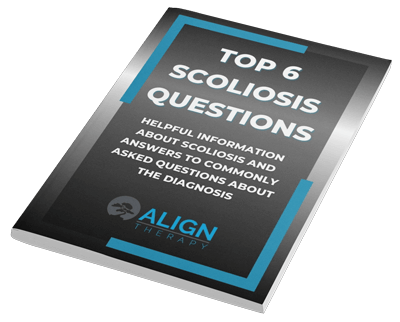Scoliosis, a three-dimensional spinal deformity, presents a unique set of challenges, not only to the individuals it affects but also to the healthcare professionals responsible for their care. The traditional medical approach to adolescent idiopathic scoliosis (AIS), the most common form, has often been described as a “watch and wait” strategy. This approach, where action is delayed until the condition worsens, has been a source of significant frustration for patients and their families. However, this passive approach is increasingly being questioned, especially with the rising evidence supporting Physiotherapeutic Scoliosis Specific Exercises (PSSE), such as the Schroth Method, as effective non-surgical options for managing scoliosis.
The Frustration with “Watch and Wait”
The “watch and wait” approach stems from a traditional perspective, aiming to avoid unnecessary treatment for curves that may not progress significantly. While conservative on the surface, this strategy can be incredibly stressful for patients and their families. The uncertainty of not knowing if or when the curve will worsen, coupled with the lack of active intervention, can lead to feelings of helplessness and anxiety. Moreover, waiting until the curve progresses might limit the effectiveness of non-surgical options, potentially leading to more invasive treatments like bracing or even surgery.
The frustration also lies in the potential missed opportunities for early intervention. Scoliosis, especially during the adolescent growth spurt, can progress rapidly. By waiting, we might miss the window where less invasive measures, such as PSSE, can be most effective in managing the curvature and improving the patient’s quality of life.
The Case for Early Intervention: PSSE and the Schroth Method
Physiotherapeutic Scoliosis Specific Exercises represent a paradigm shift in scoliosis management. Unlike general physical therapy, PSSE is tailored specifically to each patient’s unique curve pattern and aims to address the scoliosis three-dimensionally. These exercises help strengthen and stabilize the spine in a corrected position, which can halt or even reduce the progression of the curve.
The Schroth Method, developed in the 1920s by Katharina Schroth, is perhaps the most recognized form of PSSE. It focuses on elongating the trunk, de-rotating the spine, and teaching patients to maintain this corrected posture in their daily activities. The exercises are customized based on the individual’s specific scoliosis type and are designed to be practiced regularly at home, making them a proactive and empowering form of treatment.
Benefits of PSSE and the Schroth Method
1. Curve Progression Management: One of the primary goals of PSSE is to prevent further curvature of the spine. By starting these exercises early, patients can significantly reduce the risk of their scoliosis worsening, potentially avoiding the need for bracing or surgery.
2. Pain Reduction: Many individuals with scoliosis experience back pain. PSSE helps alleviate pain by strengthening the core and reducing muscle imbalance, which, in turn, reduces the abnormal spinal stresses associated with scoliosis.
3. Improved Posture and Aesthetics: By addressing the spinal deformity’s three-dimensional nature, PSSE helps patients achieve a more balanced and aligned posture. This improvement is not only beneficial for physical health but can also enhance self-esteem and body image, especially important for adolescents.
4. Empowerment and Control: Learning to manage scoliosis actively through exercise gives patients a sense of control over their condition. This empowerment can lead to better compliance with treatment and a more positive outlook on managing scoliosis.
The Need for Referral and Recognition
Despite the proven benefits of PSSE, there remains a gap in referral patterns. Many surgeons and general practitioners are either unaware of these methods or skeptical of their efficacy. This skepticism can delay referrals until the scoliosis has progressed to a point where PSSE’s effectiveness is diminished.
The need for early referral cannot be overstated. When patients are referred to a qualified PSSE practitioner early in their diagnosis, they can begin a targeted exercise regimen that may halt curve progression and improve their overall well-being. The healthcare community must recognize the value of these specialized exercises and consider them a first-line defense against scoliosis progression, rather than a last resort.
Moving Forward: Integrating PSSE into Standard Scoliosis Care
The integration of PSSE into the standard care for scoliosis requires a collaborative effort among healthcare professionals. Surgeons, pediatricians, and general practitioners should be informed about the benefits of PSSE and encouraged to refer patients for specialized physiotherapy assessment and treatment early in the diagnosis.
Education is key – both for medical professionals and the public. Increasing awareness about the effectiveness of PSSE and the importance of early intervention can lead to more timely referrals and better outcomes for individuals with scoliosis. Workshops, seminars, and continuing education courses can help bridge the knowledge gap and foster a more proactive approach to scoliosis treatment.
In conclusion, while the traditional “watch and wait” approach to scoliosis has been the standard for many years, it’s time to embrace a more active and patient-centered model. PSSE, particularly the Schroth Method, offers a promising alternative that can stop the progression of the scoliosis curve, improve pain and posture, and empower patients to take an active role in managing their condition. By shifting towards early intervention and incorporating PSSE into the standard scoliosis care, we can alleviate the frustration associated with delayed treatment and provide hope and improved quality of life for those affected by this complex condition.
If you have questions about PSSE or proactive scoliosis treatment, please reach out. You can even chat with one of our specialized therapists to discuss if this method is right for you or your loved one. Click HERE to schedule that call!
Sincerely,
David Butler, Physical Therapist



